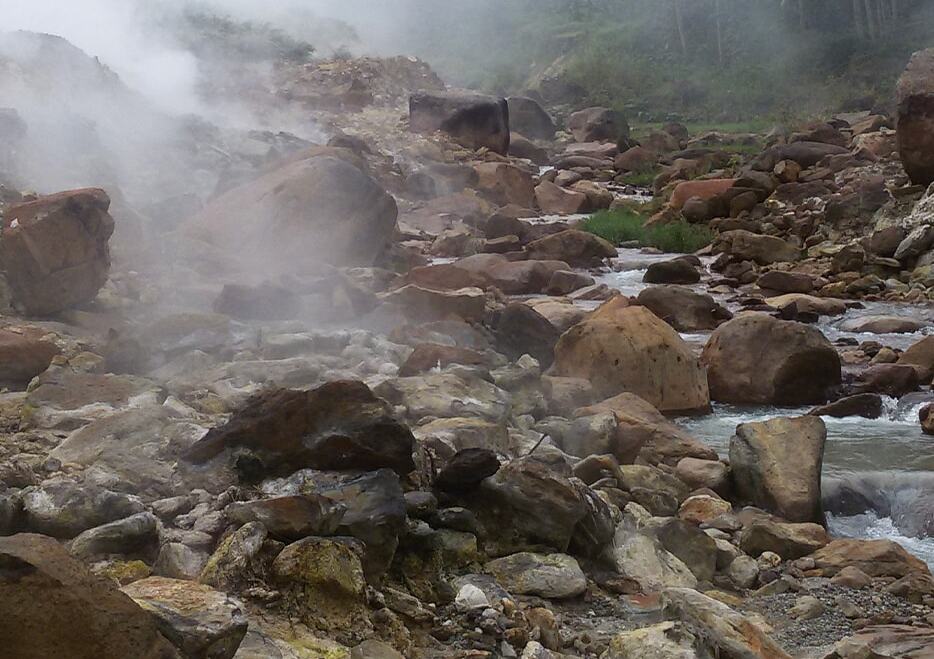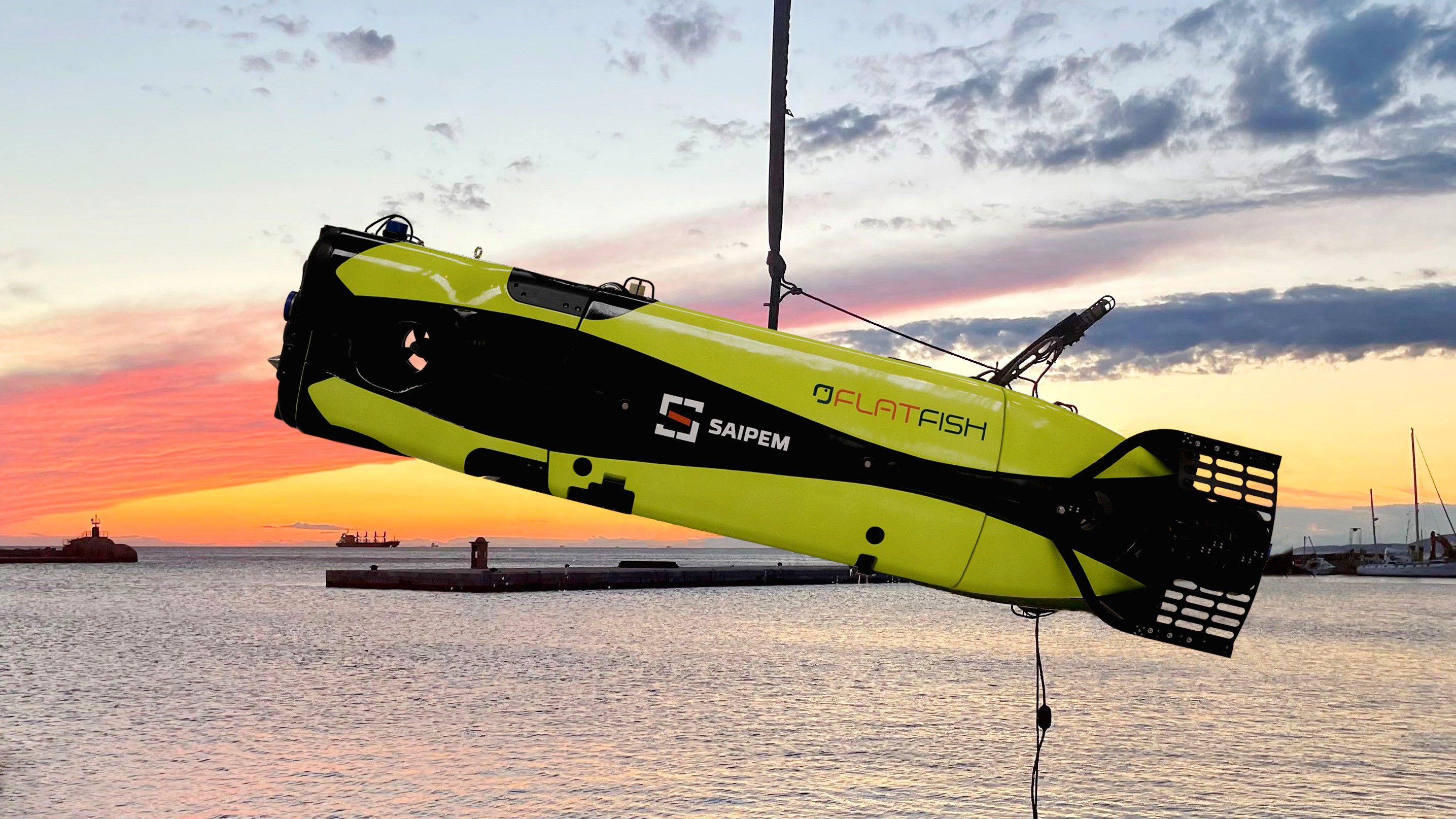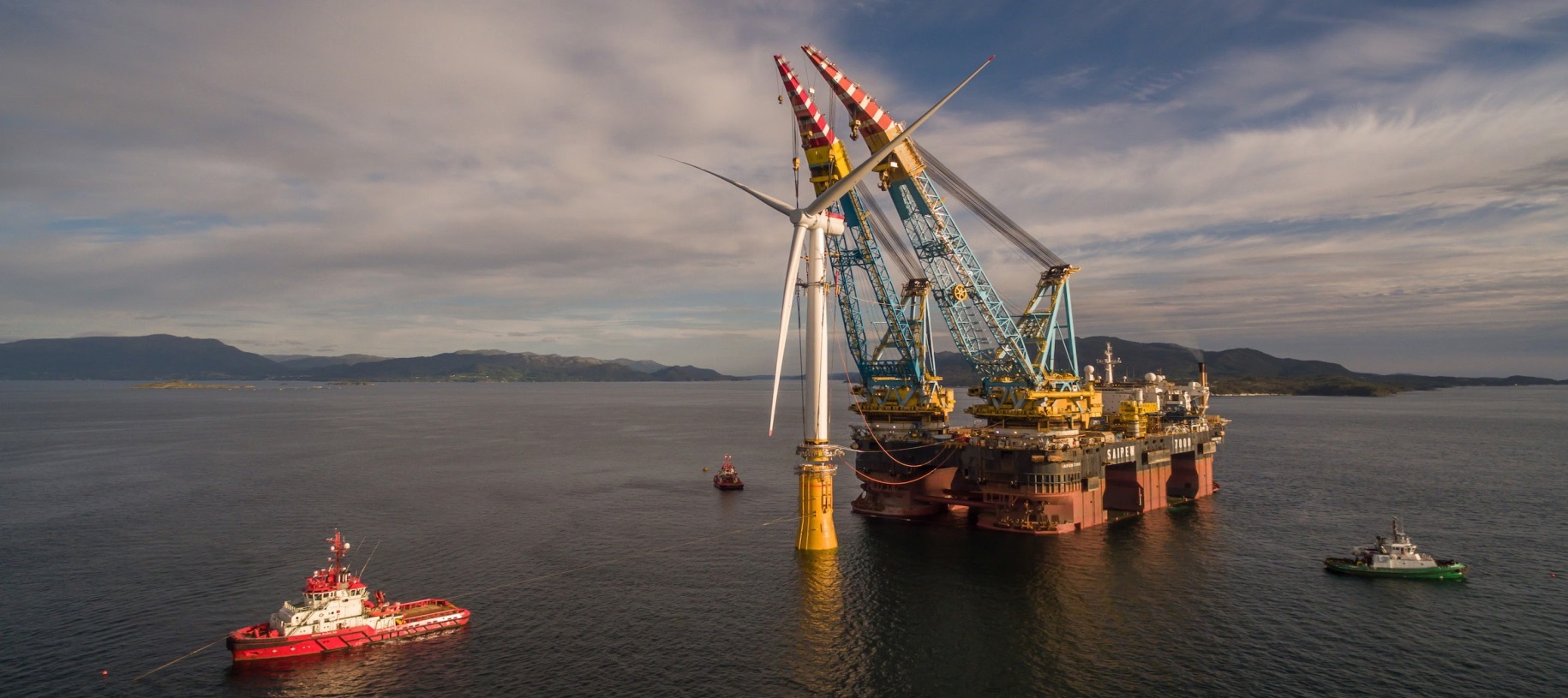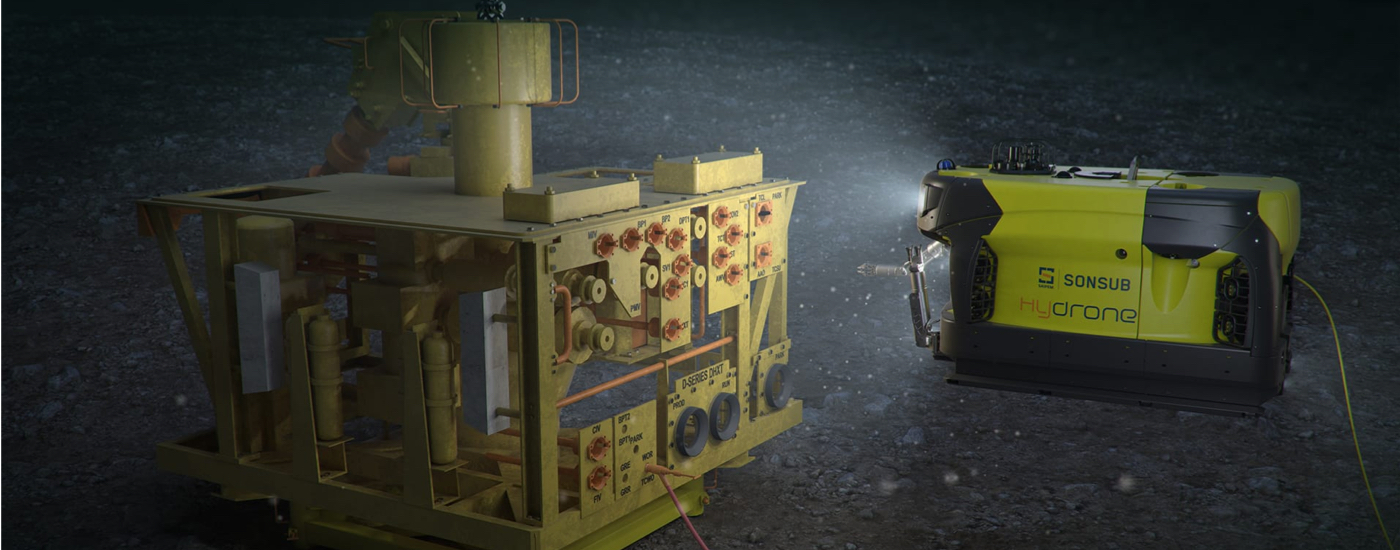Saipem's innovations in the O&G sector
Pipeline Technologies
The key factors in this area are the velocity and reliability of operations while assuring at the same time very high product quality.
Saipem continually focuses on developing and improving its proprietary hardware and software welding technologies, such as the Saipem Welding System (SWS), Submerged Arc Welding (SAW) and SPRINT, the internal plasma remelting technology.
In the field of inspections and Non-Destructive Tests, our proprietary technologies for automatic, ultrasound tests are continually being updated to increase the inspection quality of circumferential welds.
Lastly, Saipem's robotic process automation of our Field Joint Coating operations continues with a special focus on automation and application quality.
Saipem is also continuing to test new materials, specifically to replace IMPP (Injection Moulded Polypropylene), IMPU (Injection Moulded Polyurethane) for SURF and conventional bores.
Grade tests began successfully on innovative welding and field joint coating procedures and materials for pipelines to transport fluids with a high percentage of hydrogen.
These tests will enable us to be ready to construct commercial pipelines to transport mixes of hydrogen and natural gas or pure hydrogen.
To this regard, Saipem is also working on developing the new DNV guidelines together with 30 other main players in the sector.
As far as Pipe laying operations are concerned, an important goal has been achieved with the Statement of Qualified Technology awarded by DNV for our proprietary technology Integrated Acoustic Unit (IAU) to install 30”-36” diameter pipelines.
IAU technology enables potential damage on the pipelines during the laying phase to be detected and inspected.
More specifically, it enables ovalisation, deformations and anomalies, e.g. buckle, scratches, water infiltrations, and other obstacles in the pipeline to be detected and localised.
Moreover, the development of the Hands-Free Lifting Beam technology to automatically transfer sections of pipeline from the supply to the laying ship is proceeding to hit the deployment on executive projects since 2023.
I.A.U. (Integrated Acoustic Unit)
During the whole life cycle of an offshore pipeline, from installation to de-commissioning, it is sometimes necessary to localize objects blockages, damages or water ingress, both in ordinary planned inspection activities and extraordinary ones, due to accidental events.
Saipem's I.A.U. (Integrated Acoustic Unit) is an innovative digital tool, based on acoustic, and therefore, non-intrusive technology, which enables real-time monitoring of the integrity of offshore pipelines during laying activities. The new technology provides greater accuracy and timeliness in remotely detecting obstructions, pipe deformations, accidental water ingress and other types of obstacles, and eliminates the risks associated with the mechanical detector commonly used during pipelaying.
An acoustic signal is injected into one pipe end and the reflected signal is analyzed to retrieve information about the internal pipeline characteristics, using the pipeline itself as a wave-guide.
I.A.U. can also store all measurements taken and exchange them with the data acquisition system of the pipelay vessel, thus contributing to the digitalization of information regarding offshore laying operations.
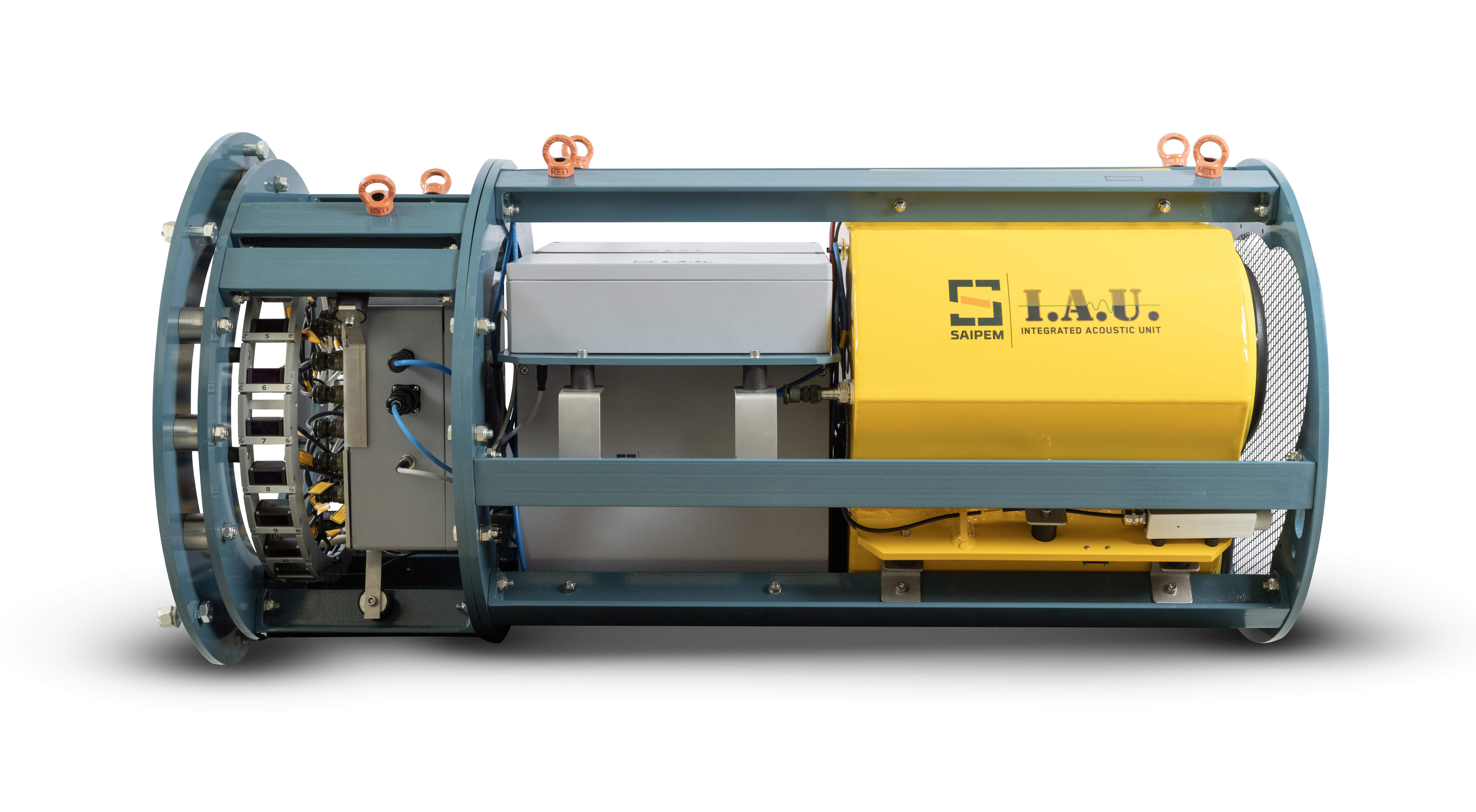
SURF (Subsea Umbilicals Risers and Flowline)
As regards the SURF sector (Subsea, Umbilicals, Risers and Flowline), we have paid close attention to Pipe-in-Pipe DEH (Direct Electric Heating) technology.
Qualification tests are underway with the aim of certifying this technology with a TRL rating of 4 on the API scale for the first commercial applications in mid 2024.
Another major focus has been the introduction of internal polymeric coatings for water injection lines, where high pressure tests have begun successfully.
A conceptual solution to extend the use of internal plastic coatings on the production lines is also under development, in partnership with TotalEnergies.
The particular aspects of plastic coating deformation to be tackled in the event of line depressurisation are the subject of numerical studies
Subsea Factory
Saipem is currently involved in developing its industrial platform called "Subsea Factory Solutions". This is a new approach to bring process treatment directly on the seabed, close to the injection wells, by reducing the costs associated to risers and flowlines, the significant costs for additional treatment modules installation on existing topsides and frees up valuable space for production or reduces the size of the new topside facilities, allowing also a significant reduction of emissions by simplification of the overall architecture.
This activity contributes to achieving the "all electric" vision to electrify marine fields, which consider building subsea infrastructures connected via power and optic fibre lines to replace complex, electro-hydraulic, umbilical connections to activate mechanisms and valves.
We have identified the relevant chain of suppliers, thanks to specific agreements (together with TotalEnergies, Siemens, Curtiss-Wright, Veolia and other technological providers).
Our SPRINGS™ programme
The technology for the SPRINGS™ programme for water treatment and re-injection has been successfully qualified (co-owned with TotalEnergies and Veolia).
The industrialisation of the relative "all-electric" sub-systems is also close to completion, once the final tests have been concluded.
These sub-systems have been industrialised in order to make use of the "foundation bricks" for the entire technological portfolio of the Subsea Factory.
The FLUIDEEP™ technology for underwater storage and injection of additives is also at an advanced stage of industrialisation and its approval is being finalised.
An operator in the sector, and our client, commissioned us a study to evaluate the application of SPRINGS™, combined with the SpoolSep™ technology to separate and treat production water; this demonstrated a reduction not only of the global cost but also on the
Saipem also introduced SUBGAS, an underwater gas dehydration and dew point control technology, to overcome the problems of flow assurance and facilitate the implementation of “long subsea gas tiebacks”. SUBGAS uses Vertical Multipipe™ technology to separate oil and gas, previously certified by executing various Joint Industry Projects (JIP) to be used in deep water.
Life of field
Saipem is developing an innovative approach to the design and maintenance of critical underwater components, by using advanced sensoristics and true digital copies, with the RIMS system (Riser Monitoring System) for advanced "Life-of-Field" applications. These new technologies have been successfully qualified and are going to be deployed
In the field of underwater intervention, repair and maintenance services (with or without divers), Saipem has successfully qualified and obtained a third party (DNV) certification for
This solution is designed to enable portions of damaged conduits to be replaced and repaired and is the sole solution today, which uses a metal on metal seal system able to guarantee permanent repairs of lines with noble metal coatings, polymeric coatings and/or operating in the presence of H2S (Hydrogen sulphide).
At the same time, we have on-going approval for an innovative repair system for pipes and spools, based on composite, reinforced fibre materials, which operates without divers at great depths.
